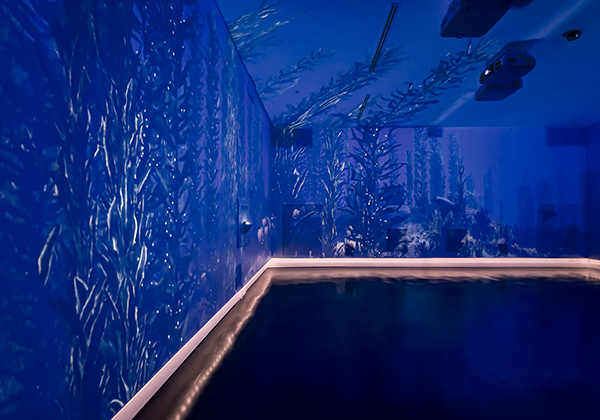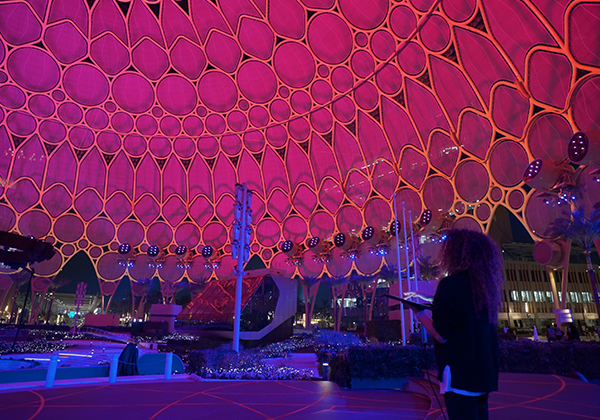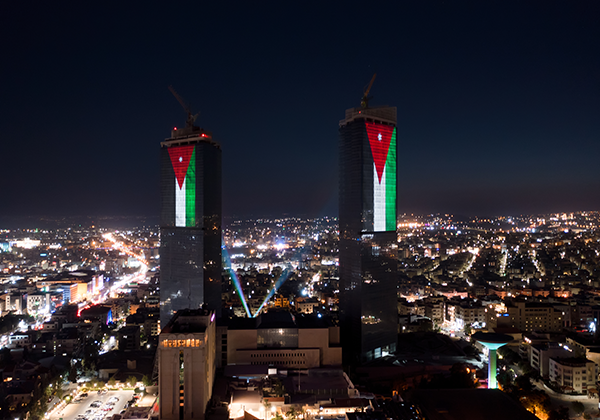
case study 2015 3 min read
Palacio de Bellas Artes

Kardia Producciones use disguise to design, sequence and control projection mapping on historic building for FILUX festival 2015.
Mexico City’s Palacio de Bellas Artes showcased a new kind of fine art when its façade served as the backdrop for “Fragments,” a seven-minute 3D projection mapping staged for FILUX 2015, the Festival Internacional de las Luces. Laszlo Zsolt Bordos, also known as Bordos.Artworks, created the concept and executed the 3D animation for “Fragments.” KARDIA Producciones, Mexico City deployed media servers from disguise and its creative software suite, including QuickCal and Dynamic Soft Edge, to map the building.
“Fragments” was presented every 30 minutes from 8:30 pm to 11 pm, May 7-10, drawing more than two million spectators. It was “without doubt the most visited attraction during the festival,” says Eliuth Herrera at KARDIA Producciones. “disguise was an extraordinary solution for the technical requirements of our project.”
For the show Bordos created a dynamic array of monotone 3D animations, which were projection mapped to the classical façade of the building. Geometric patterning and linear designs echoed the arches and columns of the architecture; searchlight-style 3D beams swept the building’s surface and fountain-type cascades spilled to overflowing down its front. At times the 3D projection mapping warped and bent the building to the point of effacing parts of it against the night sky. Another perspective distortion made the Palacio de Bellas Artes seem to recede in the distance as it was swallowed in a vortex. Finally, the building reappeared only to crumble to dust and fade to black.
“The adjustment of the video content onto the façade had to be done to high precision,” notes Bordos. “It was the very first time for me to see disguise used as the basis of the warping. The possibility of adjusting the mapped content by deforming the 3D mesh itself was exactly what we needed due to the different depths of the façade. The sophistication of the disguise server made me confident of a high-quality outcome.”

Herrera says disguise media servers were chosen for their “capacity to handle many projectors in very high resolutions. We had to play the content in a high aspect ratio, work with media in 2K and 4K and deliver dual-link resolutions.”
Laser scanning of the building by Systop provided the foundation for the 3D model built by Daniel Szalko, which was accurate to within 2mm. Once the 3D model of the projection surface was available, QuickCal, part of the disguise projector simulation toolkit, helped to rapidly calibrate the double-stacked projectors supplied by KARDIA. “It was a very important function,” says Herrera, “because we were able to achieve a great precision in adjustment starting from the mesh of the disguise model.”
She also found the disguise Dynamic Soft Edge, which generates masks automatically and dynamically, particularly useful. “It was a big help because in other systems the masks are limited to presets or subject to a few correction parameters. But the disguise tool gave us more options for adjustment from the selection of the resolution for the mask to adding and eliminating pixels and adjusting gamma between inside and outside pixels.”
For “Fragments,” the disguise operator was Ruben Casillas Perez and the technical director Hugo Ocon.
Equipment
- 4x4pro
- Find out more
- Other equipment
4U v2.5
Credits
- Content Producer
Laszlo Zsolt Bordos - Bordos.Artworks
- Technical Director
Hugo Ocon
- disguise server provider
- disguise project setup
- disguise programmer
- disguise operator
Ruben Casillas Perez

